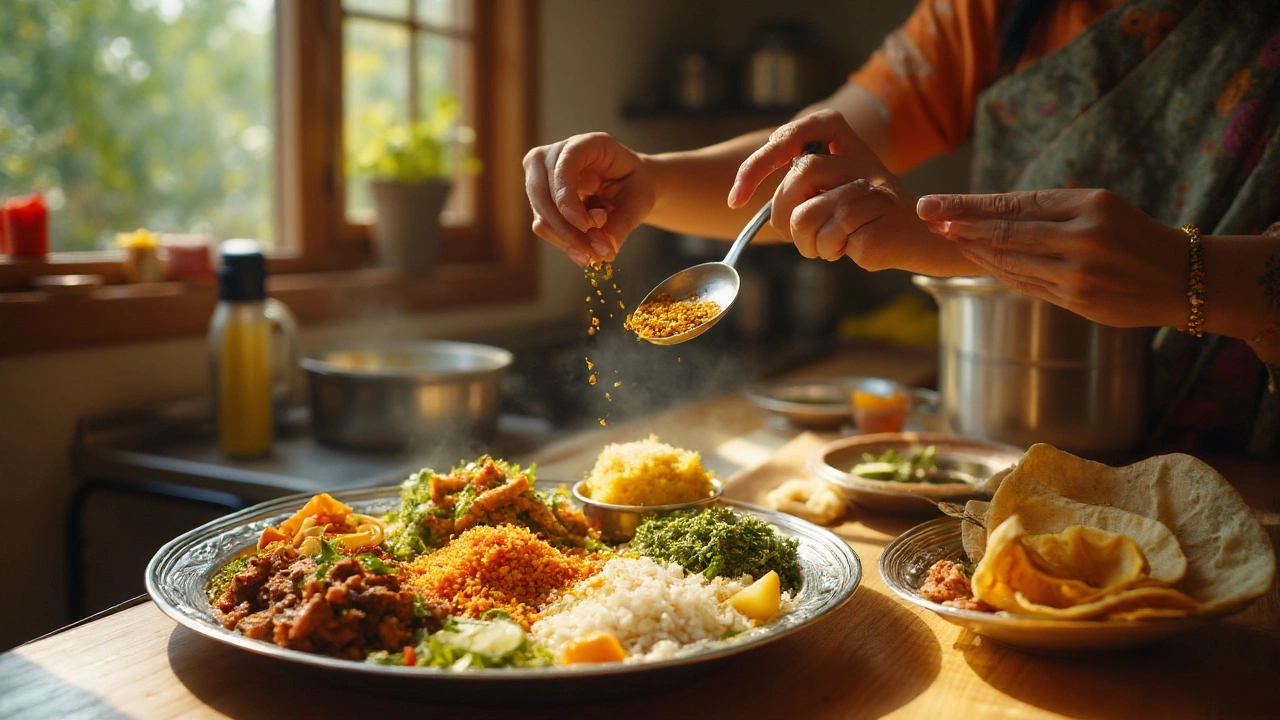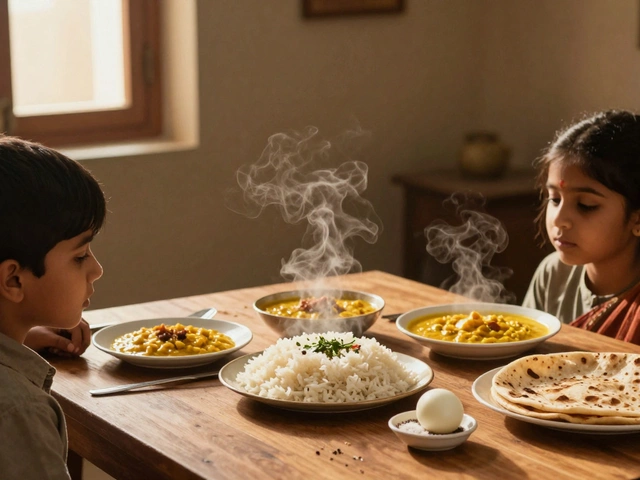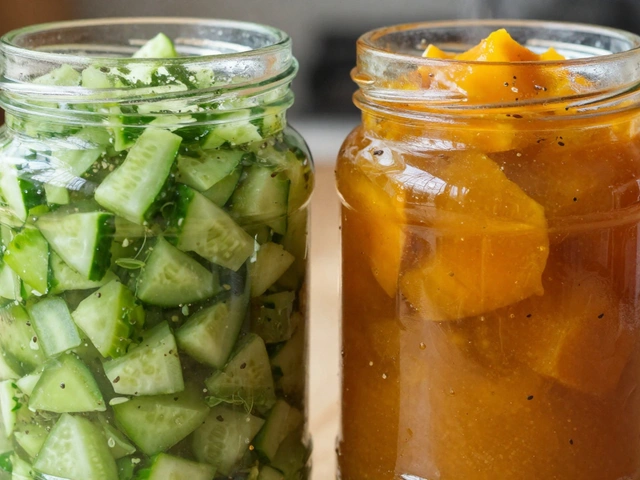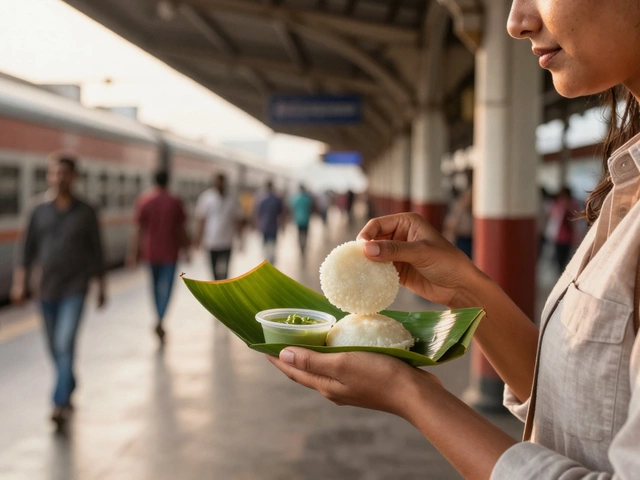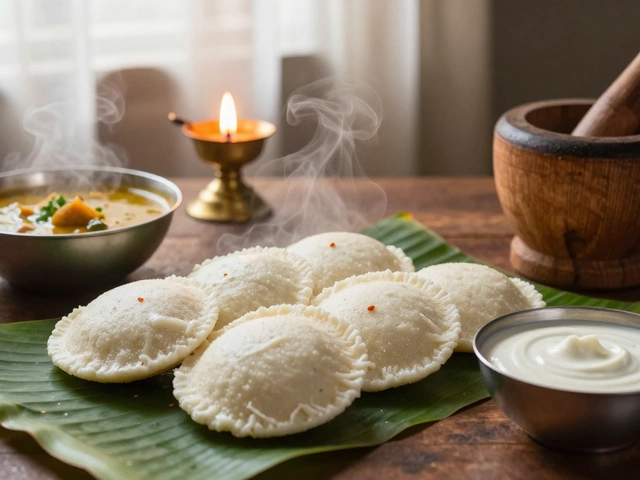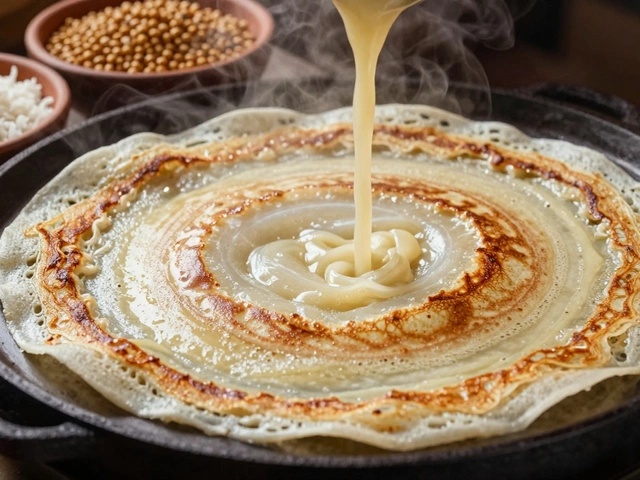Indian vegetarian food is a lacto-vegetarian dietary pattern built around pulses, whole grains, vegetables, dairy, nuts, seeds, and spices. It can be nutrient-dense-high in fiber, plant protein, and phytonutrients-when based on minimally processed staples and balanced portions.
TL;DR
- Done right, Indian veg eating supports heart health, healthy weight, and better blood sugar thanks to legumes, whole grains, vegetables, and spices.
- The traps: too much refined grain (white rice, maida), deep-fried snacks, sugary sweets, high salt, and vanaspati/trans fats.
- Build a plate: half vegetables, a quarter pulses/curd/paneer, a quarter whole grains (rotis/millets/brown rice), plus a small portion of healthy fat.
- Mind protein (20-30 g per meal), B12, iron, calcium, iodine, and omega‑3. Fortification and smart pairings help.
- Spices like turmeric, cumin, and fenugreek bring antioxidants and metabolic benefits-use them daily, not just for flavour.
What “Indian vegetarian” usually looks like
Most households follow lacto‑vegetarian norms: grains (rice, wheat), pulses (dal, chickpeas, kidney beans), vegetables, yogurt/curd, paneer, nuts, and many spices. A typical thali combines a cereal and a pulse (classic amino acid complement), making a complete protein profile without meat.
To ground the conversation, let’s define a few anchors:
Dal is a cooked pulse dish made from lentils or split legumes (e.g., masoor, moong, toor). A 1‑cup cooked serving provides roughly 15-18 g protein and 12-15 g fiber with low saturated fat.
Chickpea (Cicer arietinum) is a legume used whole (chole), split (chana dal), or milled (besan). One cooked cup offers ~14-15 g protein, 12-13 g fiber, and a low glycemic load.
Millet is a group of small‑seeded grains (ragi/finger millet, jowar/sorghum, bajra/pearl millet) with higher fiber, minerals, and often lower glycemic index than white rice or refined wheat.
Paneer is a fresh dairy cheese rich in casein protein (~18-20 g/100 g), calcium (~200-250 mg/100 g), and low lactose, making it easier to digest for many.
Turmeric (Curcuma longa) is a spice containing curcumin, a polyphenol with antioxidant and anti‑inflammatory properties. Black pepper (piperine) can enhance curcumin absorption.
Ghee is clarified butter (~62% saturated fat) with short‑ and medium‑chain fatty acids and fat‑soluble vitamins; best used in modest amounts for tempering.
Mustard oil is a cooking oil high in MUFA (~60%) and alpha‑linolenic acid (ALA, an omega‑3). Its pungency and smoke point suit sautéing and tadka.
Idli is a South Indian steamed cake from fermented rice‑urad batter; fermentation boosts B‑vitamin content and lowers glycemic response.
Why the diet can be very healthy
Legumes, whole grains, vegetables, and dairy create a nutrient‑dense base. High fiber intake (aim 25-38 g/day) improves satiety, gut health, LDL cholesterol, and insulin sensitivity. Pulses have a documented “second‑meal effect,” smoothing blood sugar at the next meal as well.
Randomized controlled trials have shown that replacing refined grains with legumes improves glycemic control in type 2 diabetes and lowers LDL cholesterol (e.g., work published in Diabetes Care and JAMA, 2012-2014). The Indian Council of Medical Research-National Institute of Nutrition (ICMR‑NIN) recommends including a pulse serving daily; many traditional menus do this naturally.
Spices add more than aroma. Turmeric (with pepper), fenugreek, cinnamon, cumin, coriander, and garlic bring polyphenols and bioactive compounds linked to lower inflammation markers and better lipid profiles. Fermented batters (idli/dosa) and yogurt support a healthy microbiome and may improve nutrient bioavailability.
Semantic connections: pulses provide lysine; cereals provide methionine; together they complete protein. Fermentation increases B‑vitamins and reduces antinutrients; steaming preserves vitamin C; tadka in minimal oil improves carotenoid absorption.
Where it goes wrong
The health halo fades when plates tilt toward refined carbs, sugar, and poor‑quality fats.
- Refined grains: White rice and maida spike glucose; large portions overwhelm the benefits of vegetables and dal.
- Deep frying: Pakoras, puris, samosas, and bhujia soak up oil; repeated reheating raises aldehydes and trans fats.
- Trans fats: Vanaspati and bakery shortenings contain industrial trans fats that raise LDL and lower HDL.
- Salt: Pickles, papad, packaged namkeen, and restaurant curries pile on sodium. WHO suggests under 5 g salt/day; many Indian diets exceed 9-10 g.
- Sweets: Gulab jamun, jalebi, and barfi pack sugar and ghee; keep these as small, occasional treats.
Healthy fat choices matter. Ghee in teaspoons for flavour? Fine. For everyday sautéing, oils rich in MUFA/PUFA-mustard, groundnut, sesame-are better. Coconut oil is stable at heat but high in saturated fat; use modestly. Rotation by cuisine can work: mustard for North/East, sesame/groundnut for West, and a little coconut for South Indian dishes.
Build a healthier thali (simple blueprint)
- Half your plate: 2-3 vegetable preparations (mix cooked and raw) for color, fiber, and polyphenols.
- Quarter plate protein: dal, rajma, chole, sambar, curd, or paneer. Target 20-30 g protein per main meal.
- Quarter plate smart carbs: whole wheat roti, brown rice, or millets like jowar, bajra, or ragi.
- Fat: 1-2 teaspoons oil/ghee per person for cooking; add nuts/seeds for crunch and omega‑3.
- Spices and sour: turmeric, cumin, coriander, ginger, garlic, and lemon or amchur to enhance iron absorption.
Example day:
- Breakfast: 2 idlis with sambar and coconut‑peanut chutney; or besan chilla stuffed with spinach and paneer; or vegetable poha with peanuts and sprouts.
- Lunch: 1 cup dal tadka, 2 whole wheat rotis, mixed veg sabzi, kachumber salad, and a bowl of curd.
- Dinner: Chole or rajma (1 cup), 1 cup brown rice or 2 jowar rotis, stir‑fried okra, and a small bowl of raita.
Numbers to visualize a balanced plate (one lunch): 1 cup dal (~18 g protein), 2 rotis (~6 g protein), 150 g curd (~5 g protein), vegetables (~8-10 g fiber). That’s ~29 g protein and 15-20 g fiber before even counting legumes like chole at dinner.
Protein: what to pick, how much, and how to pair
Plant proteins vary in density and amino acid profiles. Cereals are low in lysine; pulses are low in methionine. Combining them across meals works fine. If you’re active or aiming for fat loss, push protein toward 1.2-1.6 g per kg body weight/day using a mix of pulses, dairy, soy, and nuts/seeds.
| Food (cooked, unless noted) | Protein | Key micronutrients | Glycemic impact | Notes |
|---|---|---|---|---|
| Lentil dal (1 cup) | ~18 g | Iron, folate, potassium | Low | Great base; pair with whole grains. |
| Chickpeas (1 cup) | ~14-15 g | Iron, manganese, fiber | Low | Use as chole, hummus, or salads. |
| Kidney beans/rajma (1 cup) | ~15 g | Iron, magnesium | Low | Soak well; cook fully to reduce lectins. |
| Paneer (100 g) | ~18-20 g | Calcium, B12 (if fortified or from cow’s milk) | Minimal | Choose grilled/sauteed over cream gravies. |
| Curd/yogurt (200 g) | ~8-10 g | Calcium, iodine (if iodized salt used) | Low | Good for gut; pick unsweetened. |
| Tofu (100 g) | ~12-14 g | Calcium (if set with CaSO4), iron | Minimal | Easy swap for paneer in curries and stir‑fries. |
| Peanuts (30 g) | ~7 g | Niacin, vitamin E | Minimal | Add to poha, chutneys, or salads. |
Carbs: choose smarter staples
Not all carbs act the same. White rice is easy to digest but spikes glucose. Whole wheat rotis bring fiber and micronutrients. Millets add variety and minerals; they can also fit gluten‑free diets.
- Brown rice vs white rice: brown rice has 2-3× more fiber and a lower glycemic response; portion 1 cup cooked.
- Rotis: use whole wheat; mix with jowar or bajra for extra fiber. Limit to 2-3 per meal, depending on your energy needs.
- Millets: ragi is calcium‑rich (~344 mg/100 g raw); jowar and bajra give iron and fiber. Rotate them through the week.
- Fermented batter carbs: idli/dosa have better glycemic response than plain white rice due to fermentation and protein from urad dal.
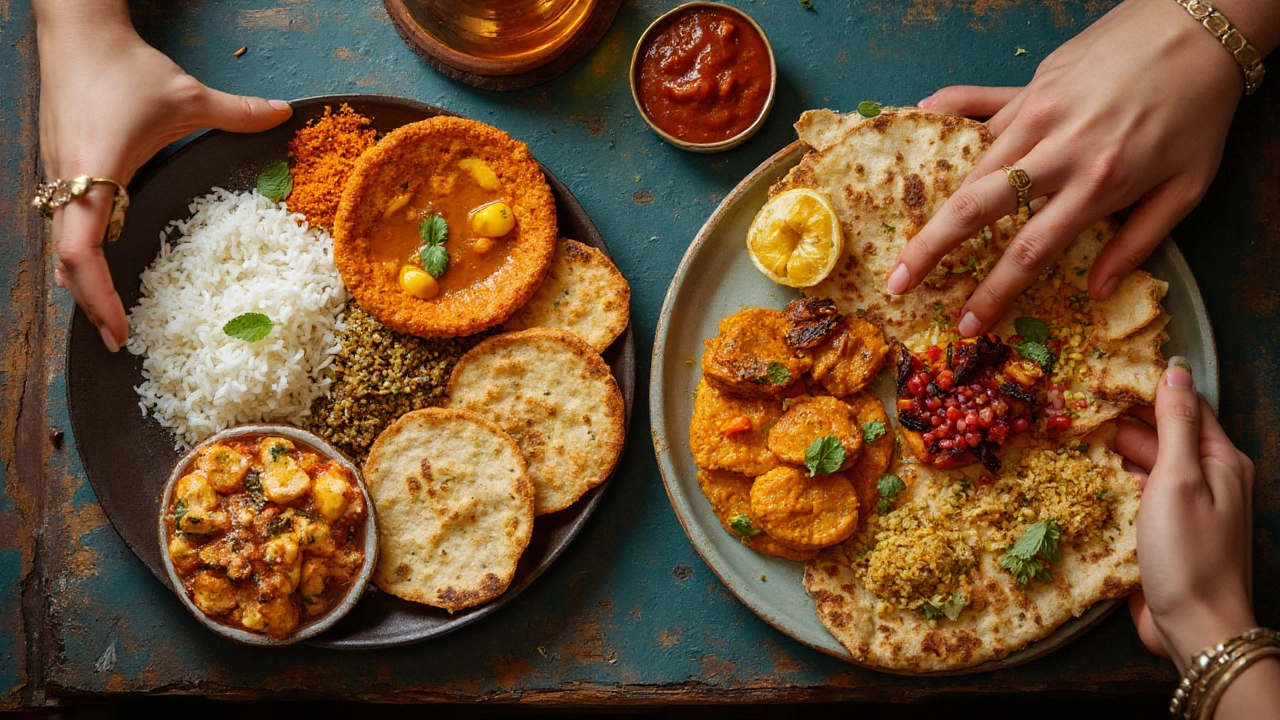
Fats and the tadka question
Spices bloom in fat, so you need some oil or ghee. The trick is dose and type.
- Everyday cooking: mustard, groundnut, sesame oils (MUFA/PUFA‑rich) for sautéing and tadka.
- Flavour finish: ghee in teaspoons for aroma; keep saturated fat in check.
- Heat stability: don’t repeatedly reheat oils; discard oil after deep frying.
- Omega‑3s: add ALA sources (flaxseed, walnuts, mustard oil). Consider DHA/EPA via algae supplements if plant‑only.
Semantic links: mustard oil provides ALA; ALA supports heart health; ghee provides saturated fats and fat‑soluble vitamins; spices need fat for bioactive absorption.
Micronutrients to watch (and fix easily)
- B12: common shortfall in strict vegetarians. Include dairy/fortified foods or a B12 supplement per your clinician’s advice.
- Iron: plant iron (non‑heme) absorbs better with vitamin C (lemon, tomatoes). Avoid tea/coffee right with meals.
- Calcium: dairy, ragi, tofu set with calcium sulfate, sesame. Aim ~1000 mg/day for adults.
- Iodine: use iodized salt, especially if avoiding seafood and eggs.
- Zinc: pulses, nuts, seeds; soaking/sprouting lowers phytates and improves absorption.
- Vitamin D: sun exposure or supplements-diet alone won’t cover it.
Weight, diabetes, and heart health: practical levers
For weight: prioritize protein at each meal, keep starch to a quarter plate, and fill the rest with fiber‑rich vegetables. Use smaller katoris and plates-portion cues matter more than we admit.
For diabetes: favor low‑GI carbs (millets, whole wheat, brown rice), pair every carb with protein (dal + roti, curd with poha), and add vinegar/lemon to meals. Legume‑rich diets consistently show lower post‑meal glucose and improved HbA1c in trials.
For heart health: switch from vanaspati to oils with MUFA/PUFA; limit fried snacks to rare treats; eat a pulse daily; add nuts 4-5 days/week; season with turmeric, garlic, and fenugreek regularly.
Quick swaps that make a big difference
- Bhatura → 2 tandoori rotis
- White rice biryani → millet pulao or brown rice biryani, extra vegetables
- Malai paneer curry → grilled paneer tikka + tomato‑onion gravy (cashew only if needed)
- Papdi chaat → baked papdi + boiled chickpeas + yogurt + chutneys
- Besan pakoras (deep‑fried) → air‑fried or pan‑griddled chillas
- Gulab jamun (2) → kheer made with toned milk and minimal jaggery, small bowl
Related concepts
- Pulses and cereals complement each other’s amino acids.
- Fermentation improves vitamin content and digestibility.
- Spice polyphenols support metabolic health when used regularly, not just as a garnish.
- Traditional thali structure maps well to modern plate models (half vegetables).
- Regional diversity (South Indian sambar, North Indian rajma, Gujarati dal) gives wide nutrient coverage when rotated.
Smart shopping and cooking checklist
- Stock 3 pulses (e.g., moong, chana, rajma) and 2 whole grains (wheat + a millet) each week.
- Soak and pressure‑cook legumes; freeze extra portions for quick meals.
- Use iodized salt and measure oil (2-3 tsp per person per day as a starting budget).
- Build masala with onion‑tomato‑ginger‑garlic and spices; add ghee only to finish if desired.
- Keep peanuts, roasted chana, and sprouts for protein‑rich snacks.
- Plan 1 fermented meal (idli/dosa/dhokla) and 1 millet meal weekly.
- Add lemon or amchur to iron‑rich dishes; keep tea/coffee 60-90 minutes away from meals.
Frequently Asked Questions
Is Indian vegetarian food healthy for daily eating?
Yes-if it leans on pulses, whole grains, vegetables, and moderate dairy with limited fried foods, sweets, and refined carbs. This pattern aligns with guidance from ICMR-NIN and global public health bodies: more legumes and whole grains, fewer ultra‑processed foods, and mindful fat and salt use.
What are the best protein sources in a vegetarian Indian diet?
Dal, chickpeas, rajma, soy (tofu), paneer, curd, and tempeh (if available). Aim for 20-30 g protein per main meal by combining a pulse with dairy or soy. Nuts and seeds add bonus protein and healthy fats, but they’re calorie‑dense-use 1-2 tablespoons.
Can Indian vegetarian food help with diabetes?
It can. Replace white rice and maida with whole wheat, millets, and brown rice; include a cup of legumes daily; add yogurt; and use spices like fenugreek and cinnamon. Trials show legume‑rich, low‑GI patterns improve HbA1c and lipids. Portion control and consistent meal times help too.
Is ghee healthy or not?
It depends on quantity and context. Ghee is mostly saturated fat. Teaspoons used for tadka or finishing can fit into a balanced diet. If you have high LDL or need to lose weight, prioritize unsaturated oils (mustard, groundnut, sesame) for most cooking and keep ghee small.
What nutrients do vegetarians commonly miss?
Vitamin B12, iron (especially for menstruating women), calcium (if dairy intake is low), iodine (if not using iodized salt), zinc, and long‑chain omega‑3s (DHA/EPA). Fortified foods and, where needed, supplements can close gaps-check with a dietitian for your case.
Are millets actually better than rice?
Often, yes. Many millets have more fiber, minerals, and a lower glycemic index than white rice. They’re not magic, though-portion size still matters. Rotate millets (ragi, jowar, bajra) with brown rice and whole wheat for diversity.
What about eating out-how do I keep it healthy?
Pick grilled or tandoori items, dal, sambar, rajma/chole, mixed vegetables, and rotis. Ask for light oil, skip the papad/pickle refills, and share sweets. Swap creamy gravies for tomato‑based ones and choose steamed rice over biryani.
How much salt and oil should I use?
As a simple home rule of thumb, budget 2-3 teaspoons oil per person per day across meals, and keep salt under 5 g per day (about 1 level teaspoon) including hidden sources like pickles, papad, and packaged snacks. Taste with herbs, spices, and lemon to rely less on salt.
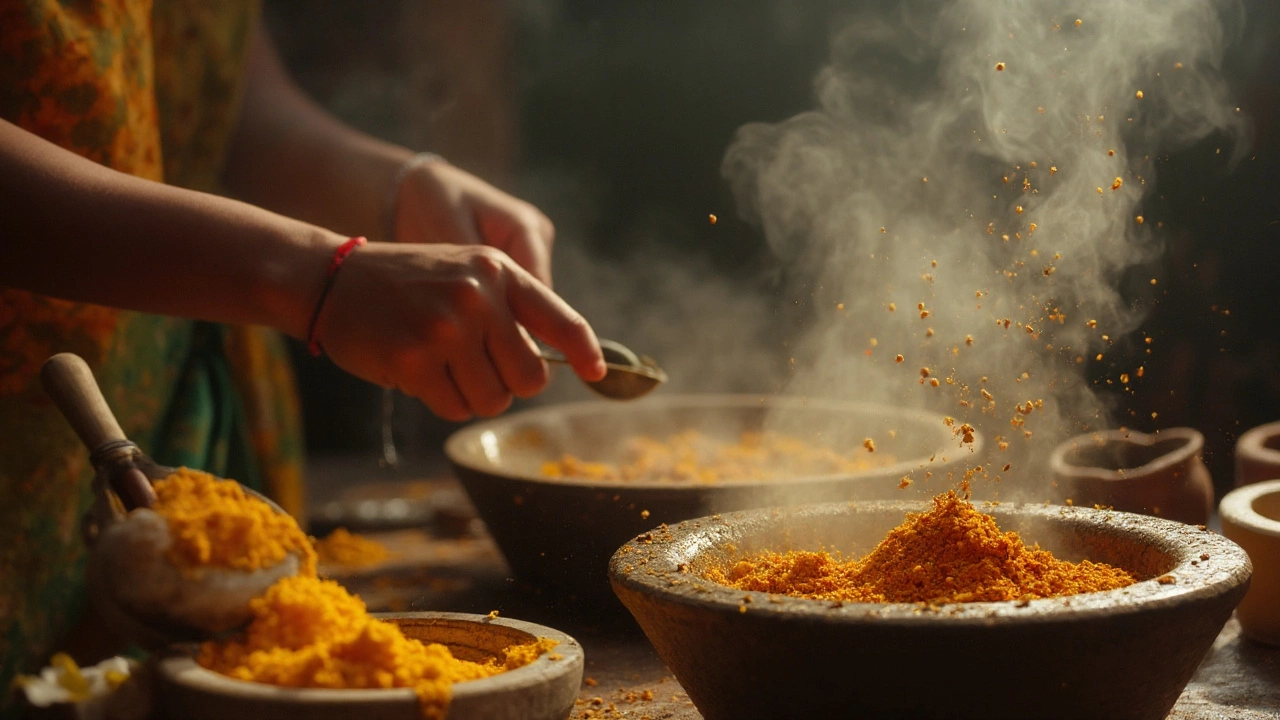
Next steps and troubleshooting
- Vegan? Use tofu/tempeh instead of paneer; fortified plant milks and nutritional yeast can help with calcium and B12; consider algae‑based DHA.
- Diabetic? Keep carbs to a quarter plate; ensure a cup of pulses daily; favor millets and brown rice; add vinegar or lemon to meals.
- Hypertension? Measure salt, limit pickles/papad, and load up on potassium‑rich vegetables and pulses.
- Low budget? Buy whole pulses in bulk, choose seasonal vegetables, and soak/sprout to reduce cooking time and boost nutrients.
- Time‑poor? Batch‑cook dal/rajma and freeze flat in bags; prep salad/kachumber boxes; keep roasted chana and curd for instant protein.
- Athlete? Target 1.4-1.8 g protein/kg with larger portions of dal, dairy/soy, and nuts; add a post‑workout carb‑protein snack (curd + fruit, or besan chilla).
- Kids? Small, frequent meals; softer textures (khichdi, idli, dahi‑rice); and nut pastes instead of whole nuts for safety.
When you let legumes lead, keep grains whole, cook with sensible oil, and use spices generously, the everyday Indian vegetarian plate turns into a sturdy, flavorful, and science‑friendly way to eat.
